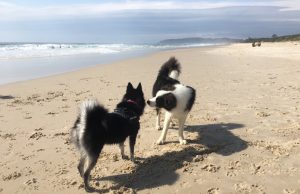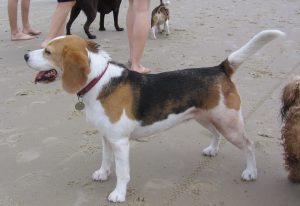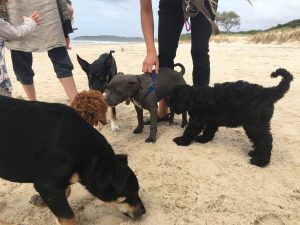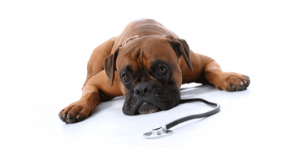Safe Car Travel with your Dog
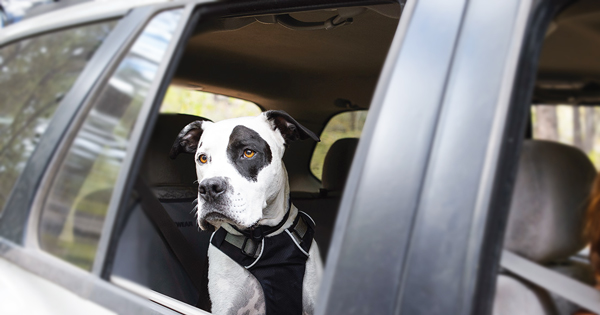
“Restraining your dog can save its life – and yours”
Safe car travel, what is required by law and WHY.
It’s great that we can take our animals with us in the car and involve them in our lives, to me that is why we have them, HOWEVER, it is sad when people are not responsible about where their pet should travel, that it is now a law in NSW that they need to be secured correctly and by not doing so they are putting their pet’s welfare at risk, potentially leading to disaster and heartbreak when it goes wrong. Here is a list of potential scenarios that happen regularly. Each year in Australia, more than 5,000 dogs are injured or killed in auto-related accidents, most as a result of being ineffectively restrained in the car, or not restrained at all. We as humans are required by law to secure ourselves in vehicles, animals are now required by law to be the same.
Here is a list of potential scenarios that happen regularly:
- A dog that is left in the car and stands up at the window and unfortunately stands on the electric window button closing the window, imprisoning them in the car, which then rapidly over heats like an oven. Temperatures in a car can rise to dangerous levels and can rapidly reach more than double the outside temperature even on mild days. Six minutes is all it takes for a pet to suffer potentially fatal heatstroke.
- Dogs should not be loose in cars, interfering with the driver’s physical disability by sitting on the driver’s lap, head hanging out the window, impairing the driver’s vision, running around the car, under the foot pedals, or obstructing gear changing this is all highly dangerous.
- A dog that distracts the driver reducing their ability to concentrate is a hazard.
- A loose dog becomes a missile if the car stops suddenly.
- A dog that escapes as a result of an open door or window after an accident is a road hazard as well as getting potentially lost.
- A dog that obstructs emergency crews at an accident scene.
- A dog loose on the back of a ute, will only to be thrown off when the driver stops suddenly of turns a sharp corner, or secured so that they can reach over the edge of the vehicle, are at risk of injury.
The list is endless
- Dogs are safest in the car when they are in a sturdy crate which is also secured to the vehicle properly, either inside or out.
- Car harnesses must fit correctly and be connected to a seat belt, and be the right length. These best for a calmer dog, not a chewer, and are not always recommended for a puppy, highly aroused or anxious animal. However restricting the dog’s ability to move around the vehicle will sometimes aid calm behaviour.
- Barriers are not as safe as crates they protect the humans but don’t stop the animals from being thrown around and being injured, or escaping through a broken window as a result of an accident.
It is a good idea to train your dog to be calm in the car, by generating boundaries with getting in and out of the vehicle making sure they have their lead put on before they leave the vehicle and only when allowed to by their guardian. Safe car travel can be also aided by providing your dog/puppy with something to chew on to occupy them (apart from the car).
In NSW the legislation stipulates that motorists must not drive a vehicle with an animal on their lap or preventing them from having proper control of the car, carries a penalty of three demerit points and $338, rising to $422 in a school zone.
Lead requirements when walking your dog in public.
- It is law that your dog should be restrained (securely attached) by a lead to a correctly fitting collar harness or halter.
- When in public places, dogs must wear collars identifying the dog’s name and address or phone number of the dog’s owner. The animal must be attached to an adequate chain, cord or leash but is exempt if being exhibited at a show, engaging in obedience trials, secured in a cage or vehicle, or is in a approved off leash area.
- In an off leash dog exercise the area the dog must be under effective control of its owner at all times in this environment.
- Greyhounds must be at all times wear a muzzle securely fixed when in public places, (unless they have a Greenhound accredation). There are also special requirements regarding dangerous and restricted dogs in public.
- Dog owners must pick up and dispose of the dog’s faeces immediately.
- No person may have more than four dogs under his/her control at any one time in any public place.
‘Safety is important for us and our pets’.
Anna Tasker, Paw Power Dog Training 0431 511215 / www.pawpower.com.au

